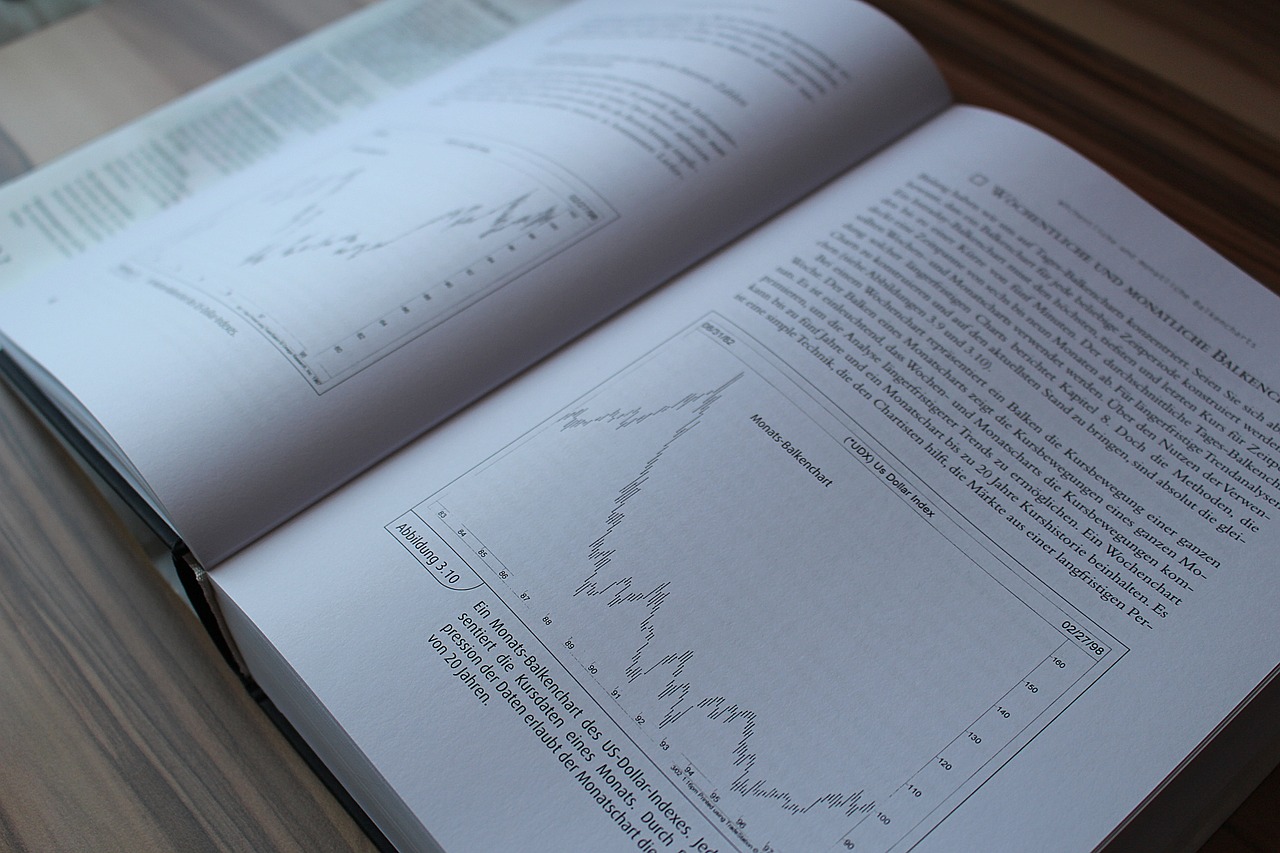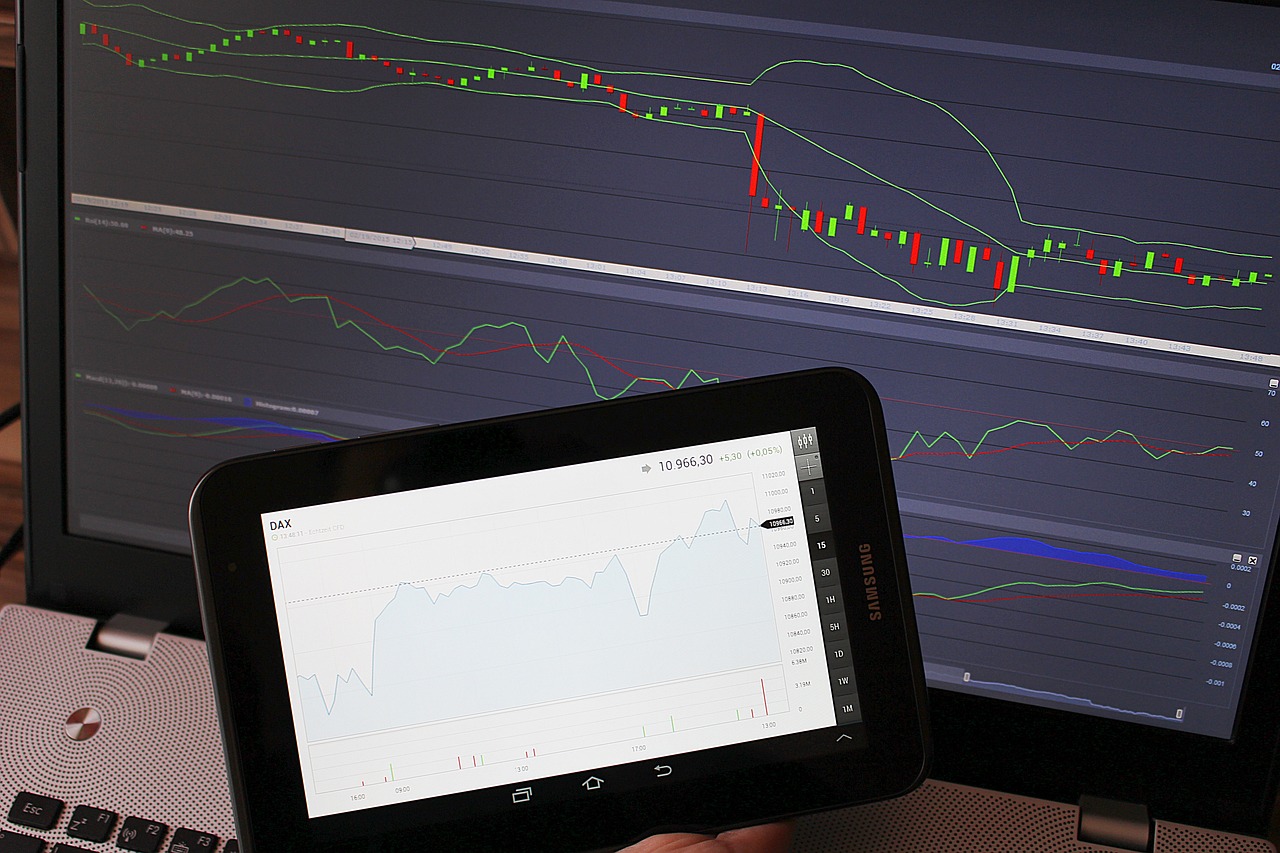How to Use RSI (Relative Strength Index) in Trading
The world of trading can often feel like navigating a vast ocean of information, with waves of data crashing down at every turn. Among the many tools available to traders, the Relative Strength Index (RSI) stands out as a beacon of clarity. This powerful momentum oscillator helps traders identify overbought or oversold conditions in the market, guiding them towards more informed trading decisions. In this article, we will explore how to effectively implement RSI in your trading strategies, ensuring you can ride the waves of the market with confidence.
The Relative Strength Index (RSI) is a momentum indicator that measures the speed and change of price movements. Developed by J. Welles Wilder Jr., it calculates the ratio of recent gains to recent losses, providing a value that ranges from 0 to 100. This scale is significant in technical analysis as it helps traders assess whether an asset is overbought or oversold. The formula for calculating RSI is:
RSI 100 - (100 / (1 + RS)) where RS Average Gain / Average Loss
Understanding the basic mechanics of RSI is crucial for any trader looking to enhance their trading toolkit. By grasping how this indicator works, you can better interpret its signals and apply them to your trading strategies.
RSI values can be a treasure map for traders, guiding them through the complexities of market conditions. The values range from 0 to 100, with specific thresholds indicating potential buying or selling opportunities. Generally, an RSI above 70 suggests that an asset is overbought, while an RSI below 30 indicates it is oversold. These thresholds are critical as they signal potential reversals in price trends.
Identifying overbought and oversold conditions is crucial for traders aiming to maximize their profits. When the RSI exceeds 70, it often means that the asset has experienced a rapid increase in price, leading to the potential for a price correction. Conversely, an RSI reading below 30 suggests that the asset has been oversold, indicating a potential rebound. Recognizing these conditions can help traders position themselves effectively:
- Overbought (RSI > 70): Watch for price corrections or reversals.
- Oversold (RSI < 30): Look for potential buying opportunities.
Traders often rely on RSI to generate actionable signals. When the RSI crosses above the 30 level, it may indicate a buying opportunity, while a drop below 70 could signal a sell. Additionally, divergence patterns, where the price moves in the opposite direction of the RSI, can also provide valuable insights into potential market reversals. Recognizing these patterns can be the difference between a successful trade and a missed opportunity.
Integrating RSI with other technical indicators can significantly enhance your trading strategies. For example, combining RSI with moving averages can help confirm trends and filter out false signals. Another popular combination is with the Moving Average Convergence Divergence (MACD), which can provide a more comprehensive view of market momentum. This multi-faceted approach allows traders to make more informed decisions, reducing the risks associated with trading.
Divergence analysis is a powerful tool when using RSI, as it can indicate potential reversals in price action. A bullish divergence occurs when the price makes a lower low while the RSI makes a higher low, suggesting that the selling pressure is weakening. On the other hand, a bearish divergence happens when the price makes a higher high while the RSI makes a lower high, indicating potential selling pressure. Recognizing these divergences can be crucial for timing your trades effectively.
The effectiveness of RSI can vary significantly across different time frames. Short-term traders may find RSI useful for quick, actionable signals, while long-term investors might use it to gauge the overall trend. Adapting your RSI strategies based on your trading style is essential for maximizing its effectiveness. Whether you're day trading or holding positions for weeks or months, understanding how RSI behaves in different time frames can enhance your trading results.
For short-term traders, RSI can serve as a quick reference for entering and exiting trades. Utilizing shorter time frames, such as 5-minute or 15-minute charts, allows traders to capitalize on rapid price movements. Quick RSI signals can help identify ideal entry points, making it essential for day trading and swing trading strategies. However, it’s crucial to remain vigilant, as short-term trading can be highly volatile.
Long-term investors may approach RSI differently. Instead of focusing on quick signals, they might use RSI to confirm trends and assess market conditions over extended periods. Patience becomes a key virtue, as long-term strategies often require a more measured approach. Analyzing RSI in conjunction with broader market trends can help investors make more informed decisions about when to enter or exit positions.
What is the ideal RSI level for trading? Generally, an RSI above 70 indicates overbought conditions, while below 30 suggests oversold conditions. However, these levels can vary based on market conditions.
Can I use RSI on any trading platform? Yes, most trading platforms offer RSI as a built-in indicator, making it accessible for traders across various markets.
Is RSI effective in all market conditions? While RSI is a powerful tool, its effectiveness can vary based on market volatility and trends. It's best used in conjunction with other indicators and analysis methods.

Understanding RSI Basics
The Relative Strength Index (RSI) is a powerful momentum oscillator that traders often rely on to gauge the strength of a price movement. But what exactly does it measure? In simple terms, the RSI calculates the speed and change of price movements over a specified period, typically 14 days. This calculation provides traders with a numerical value that ranges from 0 to 100. Understanding how to interpret these values is crucial for making informed trading decisions.
The RSI is calculated using the following formula:
RSI 100 - (100 / (1 + RS)) where: RS Average Gain / Average Loss
Here’s a quick breakdown of the components:
- Average Gain: The average of the gains during the specified period.
- Average Loss: The average of the losses during the same period.
This formula results in a value that reflects momentum. When the RSI is above 70, it indicates that the asset may be overbought, while an RSI below 30 suggests it may be oversold. These thresholds are vital for traders looking to identify potential reversal points in the market.
But why should you care about the RSI? Well, the significance of this indicator in technical analysis cannot be overstated. It helps traders determine the strength of a trend, which can lead to more strategic entry and exit points. For instance, if a stock is trending upwards but the RSI shows a declining trend, this divergence might signal a potential reversal or weakening of that trend.
Moreover, the RSI can be applied across various time frames, making it versatile for different trading styles—from day trading to long-term investing. Understanding the basics of RSI sets the foundation for utilizing it effectively in your trading strategies.
In summary, the RSI is not just a number; it's a window into market sentiment and momentum. By mastering the basics of the RSI, you'll be better equipped to navigate the complexities of trading and make decisions that align with your financial goals.

Interpreting RSI Values
The Relative Strength Index (RSI) is an essential tool for traders looking to gauge market momentum and potential price reversals. Understanding how to interpret RSI values is crucial for making informed trading decisions. The RSI ranges from 0 to 100, with specific thresholds that signal potential buying or selling opportunities. Generally, an RSI value above 70 indicates that an asset may be overbought, while a value below 30 suggests it may be oversold. This scale provides traders with a framework to assess market conditions and act accordingly.
Now, why are these thresholds so important? Think of the RSI as a temperature gauge for the market. When the RSI is above 70, it’s like the market is running a fever, suggesting that prices have risen too quickly and a correction may be imminent. Conversely, an RSI below 30 indicates that the market is cooling down, potentially creating a buying opportunity as prices may bounce back. But remember, these are not hard and fast rules; they should be used in conjunction with other analysis techniques.
To further clarify, let’s break down the interpretation of different RSI ranges:
| RSI Value | Market Condition | Implication for Traders |
|---|---|---|
| 0 - 30 | Oversold | Potential buying opportunity; prices may bounce back. |
| 30 - 70 | Neutral | Market is balanced; no clear buying or selling signals. |
| 70 - 100 | Overbought | Potential selling opportunity; prices may correct downward. |
As you can see, the RSI values serve as a guide, but they should not be the sole factor in your trading strategy. It’s essential to consider other market indicators and perform thorough analysis before making trades. For instance, if the RSI shows that a stock is overbought, but other indicators suggest a strong bullish trend, it might be wise to hold off on selling. Similarly, if the RSI indicates oversold conditions, but the overall market sentiment is negative, further caution may be warranted.
In conclusion, interpreting RSI values requires a blend of intuition, market knowledge, and analytical skills. By understanding the implications of different RSI levels, traders can better position themselves to capitalize on market movements. Always remember, the RSI is just one piece of the puzzle—combine it with other indicators and analysis methods for a more comprehensive trading strategy.
- What is a good RSI level to consider for trading? Generally, RSI levels above 70 indicate overbought conditions, while levels below 30 suggest oversold conditions.
- Can RSI be used in any market? Yes, RSI can be applied to various markets, including stocks, forex, and commodities.
- Is RSI effective for all trading styles? While RSI can be beneficial for both short-term and long-term trading, its effectiveness may vary based on the trading strategy and market conditions.

Overbought and Oversold Conditions
The concept of overbought and oversold conditions is fundamental when using the Relative Strength Index (RSI) in trading. Understanding these terms can be the difference between a winning trade and a costly mistake. So, what do these terms really mean? Simply put, an overbought condition indicates that a security has experienced a rapid price increase and may be due for a correction, while an oversold condition suggests that a security has seen a significant price drop and could be primed for a rebound.
To put it into perspective, think of the RSI as a rubber band. When the band is stretched too far in one direction (overbought), it’s likely to snap back. Conversely, when it’s too compressed (oversold), it has the potential to spring back up. The RSI uses a scale from 0 to 100, with readings above 70 typically signaling overbought conditions and readings below 30 indicating oversold conditions. This scale helps traders gauge the momentum of price movements and make informed decisions.
Here’s a quick overview of the RSI scale:
| RSI Value | Condition | Implication |
|---|---|---|
| Above 70 | Overbought | Potential price correction or reversal. |
| 30 to 70 | Neutral | Market is stable; no clear signals. |
| Below 30 | Oversold | Potential price rebound or reversal. |
It's crucial to remember that while these thresholds are widely accepted, they should not be treated as definitive buy or sell signals. Instead, they serve as a guideline. For instance, an asset can remain overbought for an extended period during a strong bullish trend, and likewise, an oversold asset can continue to drop in a bearish market. Thus, context is key!
Traders often combine RSI readings with other indicators or market analysis to confirm their strategies. For example, if the RSI indicates overbought conditions but the price continues to rise, it might be wise to wait for a more definitive signal before entering a trade. On the flip side, if the RSI shows oversold conditions and other indicators also suggest a potential reversal, it could be an opportune moment to consider buying.
In summary, recognizing overbought and oversold conditions through the RSI can greatly enhance your trading strategy. However, always remember to use it in conjunction with other tools and analysis to make well-informed trading decisions. After all, trading is as much about managing risk as it is about seizing opportunities!
- What does it mean when RSI is above 70? This indicates that the asset is considered overbought and may be due for a price correction.
- Can RSI remain in the overbought or oversold territory for long periods? Yes, assets can stay overbought or oversold for extended periods during strong trends.
- How should I use RSI in my trading strategy? Use RSI in conjunction with other indicators and market analysis to confirm signals before making trading decisions.

Trade Signals from RSI
The Relative Strength Index (RSI) is not just a number; it’s a powerful tool that can provide traders with crucial insights into market behavior. When you dive into the world of RSI, you’ll discover that it can generate various trade signals that guide your buying and selling decisions. Understanding these signals can be the difference between a profitable trade and a missed opportunity.
One of the primary ways traders use RSI is by looking for overbought and oversold conditions. When the RSI crosses above the 70 mark, it often signals that a security is overbought, meaning that the price may have risen too quickly and could be due for a correction. Conversely, when the RSI dips below the 30 level, it indicates that a security is oversold, suggesting that it may be undervalued and due for a rebound. These thresholds are not just arbitrary numbers; they represent key levels where market sentiment can shift dramatically.
Another critical aspect of using RSI for trade signals is recognizing divergence. This occurs when the price action of a security moves in the opposite direction of the RSI. For example, if the price is making new highs while the RSI is failing to reach new highs, this divergence can be a warning sign that the current trend may be losing momentum. Such signals can provide traders with early indications of potential reversals, allowing them to adjust their strategies accordingly.
To illustrate the concept of divergence, consider the following table that outlines the types of divergence and their implications:
| Divergence Type | Price Action | RSI Movement | Implication |
|---|---|---|---|
| Bearish Divergence | Price making higher highs | RSI making lower highs | Potential price reversal downward |
| Bullish Divergence | Price making lower lows | RSI making higher lows | Potential price reversal upward |
In addition to overbought/oversold conditions and divergence, traders can look for crossovers of the RSI line itself. For instance, if the RSI crosses above the 50 level, it can indicate a shift in momentum to the upside, prompting traders to consider buying. On the flip side, an RSI crossing below the 50 line might suggest a bearish trend, signaling that it could be time to sell. These crossovers can be especially useful when combined with other indicators, creating a more robust trading strategy.
Lastly, it's essential to remember that while RSI can provide valuable signals, it should not be used in isolation. Always consider the broader market context and combine RSI signals with other technical indicators and fundamental analysis. This comprehensive approach can enhance your trading decisions and help you navigate the complexities of the market more effectively.
- What is the best RSI setting for trading? While the standard setting is 14 periods, traders often adjust this based on their specific strategy and the time frame they are trading.
- Can RSI be used for all types of assets? Yes, RSI can be applied to stocks, forex, commodities, and cryptocurrencies, making it a versatile tool for various markets.
- How reliable are RSI signals? RSI signals are generally reliable, but like any indicator, they should be used in conjunction with other analysis methods for best results.

Combining RSI with Other Indicators
When it comes to trading, the Relative Strength Index (RSI) is a powerful tool on its own, but its true potential shines when combined with other indicators. Think of RSI like a compass; it gives you direction, but when paired with a map—such as moving averages or the Moving Average Convergence Divergence (MACD)—you can navigate the trading landscape much more effectively. By integrating RSI with these indicators, traders can enhance their decision-making process and improve the accuracy of their trades.
One of the most common combinations is using RSI with moving averages. Moving averages smooth out price data over a specific period, helping to identify the overall trend. For instance, if you see that the RSI is above 70 (indicating overbought conditions) while the price is also above a moving average, it might suggest that the market is indeed overbought, but the trend is strong. Conversely, if the RSI is below 30 (indicating oversold conditions) and the price is below a moving average, it could indicate a potential buying opportunity, provided that the overall trend is turning bullish.
Another effective combination is RSI with the MACD. The MACD is a trend-following momentum indicator that shows the relationship between two moving averages of a security’s price. When the MACD line crosses above the signal line while the RSI is below 30, it can signal a strong buying opportunity. On the flip side, if the MACD line crosses below the signal line while the RSI is above 70, it can indicate a potential sell signal. This dual confirmation can help traders avoid false signals and make more informed decisions.
Moreover, it’s essential to consider the time frame when combining these indicators. For short-term trading, you might want to use shorter moving averages (like the 5-day or 10-day) along with the RSI for quicker signals. In contrast, long-term traders might opt for longer moving averages (like the 50-day or 200-day) to confirm trends and filter out noise. The synergy between these indicators can provide a more comprehensive view of market conditions.
In summary, combining RSI with other indicators not only strengthens your trading strategy but also provides a multi-dimensional view of market dynamics. Whether you’re using moving averages, MACD, or other indicators, the key is to find a combination that resonates with your trading style and risk tolerance. Always remember, no indicator is foolproof, so risk management and a solid trading plan are crucial to your success.
- What is the best indicator to combine with RSI? While it depends on your trading style, many traders find that combining RSI with moving averages or MACD yields effective results.
- Can RSI be used in all market conditions? Yes, RSI can be utilized in various market conditions, but it’s essential to adjust your strategy based on whether the market is trending or ranging.
- How do I know when to trust the signals from RSI? Always look for confirmation from other indicators and consider the overall market context before acting on RSI signals.

Divergence Analysis with RSI
Divergence analysis is a powerful tool when it comes to using the Relative Strength Index (RSI) for trading decisions. Essentially, divergence occurs when the price of an asset moves in one direction while the RSI indicator moves in the opposite direction. This discrepancy can signal potential reversals in market trends, making it a crucial aspect of technical analysis. Understanding how to identify these divergences can significantly enhance your trading strategy and decision-making process.
There are two primary types of divergences to consider: bullish divergence and bearish divergence. A bullish divergence happens when the price makes a lower low, but the RSI forms a higher low. This indicates that while the price is declining, the momentum behind the move is weakening, suggesting a possible reversal to the upside. Conversely, a bearish divergence occurs when the price makes a higher high, but the RSI creates a lower high. This scenario signals that despite the price increasing, the momentum is fading, which could lead to a potential downturn.
To illustrate this concept, let's take a look at a simple table that summarizes the characteristics of both bullish and bearish divergences:
| Divergence Type | Price Action | RSI Action | Implication |
|---|---|---|---|
| Bullish Divergence | Lower Low | Higher Low | Potential Price Reversal Up |
| Bearish Divergence | Higher High | Lower High | Potential Price Reversal Down |
Recognizing these divergences is not just about spotting them on a chart; it's also about timing your trades effectively. For instance, when you identify a bullish divergence, it may be wise to wait for a confirmation signal, such as a breakout above a significant resistance level or a bullish candlestick pattern, before entering a trade. This additional confirmation helps to reduce the risk of false signals, which can occur frequently in volatile markets.
On the flip side, with bearish divergence, traders might consider placing stop-loss orders above the recent high to protect against unexpected price movements. Remember, the key to successful trading is not just about knowing the signals but also about implementing proper risk management strategies. By combining divergence analysis with other indicators, such as moving averages or trend lines, you can create a more comprehensive trading plan that enhances your chances of success.
In conclusion, divergence analysis with RSI is an essential skill for traders looking to identify potential market reversals. By understanding how to interpret these signals and integrating them into your trading strategy, you can make more informed decisions and improve your overall trading performance. So, the next time you're analyzing a chart, keep an eye out for those divergences—they might just be the key to unlocking your next profitable trade!
If you're new to RSI and divergence analysis, you might have a few questions. Here are some of the most common inquiries:
- What is the best time frame to use RSI for divergence analysis? It depends on your trading style. Short-term traders might prefer 15-minute or hourly charts, while long-term investors might look at daily or weekly charts.
- Can RSI be used alone for trading decisions? While RSI is a powerful tool, it's best used in conjunction with other indicators to confirm signals and reduce risk.
- How often do divergences occur? Divergences can happen frequently, but not all of them lead to significant reversals. It's essential to analyze the context and use additional confirmation methods.

RSI in Different Time Frames
The Relative Strength Index (RSI) is a versatile tool that can be utilized across various time frames, making it suitable for both short-term and long-term trading strategies. Understanding how to adapt RSI to different time frames is crucial for maximizing trading opportunities. Just like a camera lens can zoom in or out to capture the right moment, traders must adjust their perspective when analyzing price movements with RSI. This section will dive into how RSI behaves across different time frames and how you can tailor your trading strategies accordingly.
When using RSI, the time frame you choose can significantly impact your trading decisions. For instance, short-term traders, such as day traders, might focus on 5-minute or 15-minute charts, while long-term investors might look at daily or weekly charts. The key is to recognize that the RSI will react differently based on the time frame selected. In shorter time frames, RSI can provide quicker signals, but it also comes with increased noise, leading to false signals. On the other hand, longer time frames tend to produce more reliable signals, but they may require more patience.
Here's a quick breakdown of how RSI can be interpreted in different time frames:
| Time Frame | RSI Characteristics | Trading Implications |
|---|---|---|
| Short-Term (5-15 minutes) | More volatile, prone to false signals | Quick entries and exits; requires rapid decision-making |
| Medium-Term (1 hour - 4 hours) | Balanced signals, moderate noise | Good for swing trading; allows for more strategic planning |
| Long-Term (Daily - Weekly) | Fewer signals, more reliable | Best for trend-following strategies; requires patience |
For short-term trading strategies, traders often look for rapid RSI movements that indicate potential entry or exit points. For example, if the RSI dips below 30 and then quickly rises above it, this could signal a buying opportunity. Conversely, if the RSI climbs above 70 and then falls back, it might be a good time to sell. However, it's essential to remain cautious, as the noise in short-term charts can lead to misleading signals.
On the flip side, long-term traders should utilize RSI to confirm broader market trends. In this context, a consistently high RSI reading could indicate a strong bullish trend, while a low RSI might suggest a bearish trend. Long-term investors can use these insights to make informed decisions about when to enter or exit positions, often ignoring the daily fluctuations that might confuse short-term traders.
Ultimately, the effectiveness of RSI in different time frames boils down to your trading style and goals. Whether you’re a day trader seeking quick gains or a long-term investor looking for substantial returns, adapting your RSI strategy to your chosen time frame can enhance your trading performance. Just remember, the key is not just in the signals but in how you interpret them based on the context of the market.
- What is the best time frame for using RSI? The best time frame depends on your trading style. Short-term traders may prefer 5-15 minute charts, while long-term traders may favor daily or weekly charts.
- Can RSI be used alone for trading decisions? While RSI is a powerful tool, it's often best to use it in conjunction with other indicators to confirm signals and reduce the risk of false positives.
- How often should I check RSI values? This varies based on your trading strategy; short-term traders might check RSI frequently, while long-term investors may only check it periodically.

Short-Term Trading Strategies
When it comes to short-term trading, the Relative Strength Index (RSI) can be a powerful ally in your toolkit. Think of it as your trading compass, helping you navigate through the often turbulent waters of the market. Short-term traders, especially those engaged in day trading or swing trading, rely heavily on quick signals generated by the RSI to make informed decisions. But how exactly can you harness the power of RSI for short-term gains?
First off, it's essential to understand that short-term trading is all about timing. You want to enter and exit positions swiftly, capitalizing on small price movements. The RSI, with its ability to highlight overbought and oversold conditions, can help you determine when to jump in or out of a trade. For instance, if the RSI shoots above 70, it may signal that an asset is overbought, suggesting that it might be time to sell. Conversely, an RSI reading below 30 indicates oversold conditions, which could present a buying opportunity.
Moreover, using the RSI in conjunction with other indicators can enhance your trading strategy. For example, combining the RSI with moving averages can provide a clearer picture of the market trend. You might find that when the RSI aligns with a moving average crossover, it creates a compelling trade signal. This synergy can increase your chances of making profitable trades.
To effectively implement RSI in your short-term trading strategies, consider the following tips:
- Set Clear Entry and Exit Points: Before entering a trade, define your entry and exit points based on RSI levels. This will help you stay disciplined and avoid emotional trading.
- Monitor Market Conditions: Keep an eye on overall market trends and news that could impact your trades. Even the best RSI signals can be affected by major market events.
- Stay Flexible: Short-term trading requires adaptability. If the market shifts unexpectedly, be prepared to adjust your strategy accordingly.
Additionally, it's crucial to manage your risk effectively. Set stop-loss orders to limit potential losses, especially in the fast-paced world of short-term trading. A well-placed stop-loss can protect your capital and allow you to trade with confidence.
In summary, the RSI can be a game-changer for short-term traders when used correctly. By understanding its signals, combining it with other indicators, and maintaining a disciplined approach, you can enhance your trading strategy and potentially improve your profitability. So, the next time you’re looking at a chart, don’t forget to check the RSI—it could be the key to your trading success!
1. What is the best RSI setting for short-term trading?
While the standard setting for RSI is 14 periods, many short-term traders prefer to use a shorter timeframe, such as 5 or 7 periods, to capture faster price movements.
2. Can RSI be used in all market conditions?
Yes, RSI can be applied in various market conditions. However, it's essential to adapt your strategy based on whether the market is trending or ranging.
3. How do I avoid false signals with RSI?
To minimize false signals, consider using RSI in conjunction with other indicators, such as moving averages or volume analysis, to confirm your trading decisions.
4. Is RSI suitable for long-term trading?
While RSI is primarily used for short-term trading, long-term traders can also benefit from it by looking at longer timeframes and using it to identify broader market trends.

Long-Term Trading Considerations
When it comes to long-term trading, the Relative Strength Index (RSI) serves as a valuable tool, but it’s essential to approach it with a different mindset compared to short-term trading. In the fast-paced world of day trading, traders often look for immediate signals, but long-term investors should focus on broader trends and the overall market context. This means using the RSI not just as a standalone indicator, but as part of a comprehensive analysis that includes fundamental factors and macroeconomic trends.
One of the key aspects of long-term trading with RSI is to recognize that the market can remain overbought or oversold for extended periods. For instance, while an RSI reading above 70 typically suggests that a security is overbought, in a strong bullish trend, the RSI can stay elevated for weeks or even months. Conversely, in a bearish market, an RSI below 30 can persist for a long time. Therefore, patience is crucial. Long-term traders should avoid making hasty decisions based solely on RSI readings and instead look for confirmation from other indicators and the overall market sentiment.
Moreover, it’s beneficial to analyze the RSI in conjunction with price action over longer time frames. For example, using weekly or monthly charts can provide a clearer picture of the underlying trend. This approach allows traders to identify significant support and resistance levels, as well as potential reversal points. By doing so, long-term traders can make more informed decisions about when to enter or exit positions, minimizing the risk of getting caught in temporary price fluctuations.
Additionally, long-term traders should consider incorporating other technical indicators alongside the RSI. Combining RSI with moving averages can be particularly effective. For example, a trader might look for situations where the RSI crosses above 50 while the price is above a long-term moving average. This could signal a strong bullish trend, providing a more robust foundation for making trading decisions.
Ultimately, the key to successful long-term trading with RSI lies in understanding the bigger picture. It’s about recognizing that the market is dynamic and that indicators like the RSI are just one piece of the puzzle. By maintaining a patient and disciplined approach, long-term traders can harness the power of the RSI while avoiding the pitfalls of overreacting to short-term market movements.
- What is the best time frame to use RSI for long-term trading?
For long-term trading, using weekly or monthly charts can provide a clearer picture of trends and help avoid false signals.
- How can I combine RSI with other indicators?
Integrating RSI with moving averages or trendlines can enhance your analysis, helping to confirm signals and identify market trends.
- Is RSI effective in all market conditions?
While RSI is a useful tool, its effectiveness can vary. It’s essential to consider the broader market context and combine it with other analyses.
- How do I avoid false signals when using RSI?
To minimize false signals, look for confirmation from other indicators and analyze price action over longer time frames.
Frequently Asked Questions
- What is the Relative Strength Index (RSI)?
The Relative Strength Index (RSI) is a momentum oscillator that measures the speed and change of price movements. It helps traders identify whether an asset is overbought or oversold, providing insights into potential buying or selling opportunities.
- How do I interpret RSI values?
RSI values range from 0 to 100. Generally, an RSI above 70 indicates that an asset may be overbought, while an RSI below 30 suggests it may be oversold. Traders often look for these levels to make informed decisions about entering or exiting trades.
- What are overbought and oversold conditions?
Overbought conditions occur when the RSI is above 70, signaling that the asset may be overvalued and due for a price correction. Conversely, oversold conditions happen when the RSI is below 30, indicating that the asset might be undervalued and could experience a price rebound.
- How can I use RSI to generate trade signals?
Traders can use RSI to generate buy and sell signals by observing RSI movements and divergence patterns. For instance, if the RSI rises above 30 after being in the oversold territory, it can signal a potential buying opportunity. Similarly, a drop below 70 after being overbought may suggest a selling opportunity.
- Can I combine RSI with other indicators?
Absolutely! Combining RSI with other technical indicators, like moving averages or the MACD, can enhance your trading strategies. This integration can provide more robust signals and help confirm trends, making your trading decisions more reliable.
- What is divergence analysis with RSI?
Divergence analysis occurs when the price action of an asset moves in the opposite direction of the RSI. A bullish divergence indicates that the price is making lower lows while the RSI is making higher lows, suggesting a potential price reversal upward. Conversely, a bearish divergence occurs when the price makes higher highs while the RSI makes lower highs, indicating a possible downward reversal.
- How does RSI perform in different time frames?
The effectiveness of RSI can vary across different time frames. Short-term traders may rely on quick signals, while long-term investors might use RSI to identify broader trends. Adapting your RSI strategy based on the time frame you're trading in is crucial for maximizing its effectiveness.
- What are some short-term trading strategies using RSI?
Short-term traders often look for quick RSI signals, such as entering trades when the RSI crosses above 30 or below 70. This can be particularly effective in day trading or swing trading scenarios where rapid price movements are common.
- How can long-term investors utilize RSI?
Long-term investors may use RSI to identify trends and potential entry points over a more extended period. By being patient and analyzing broader market trends, investors can apply RSI to make more informed decisions while minimizing the impact of short-term volatility.



















